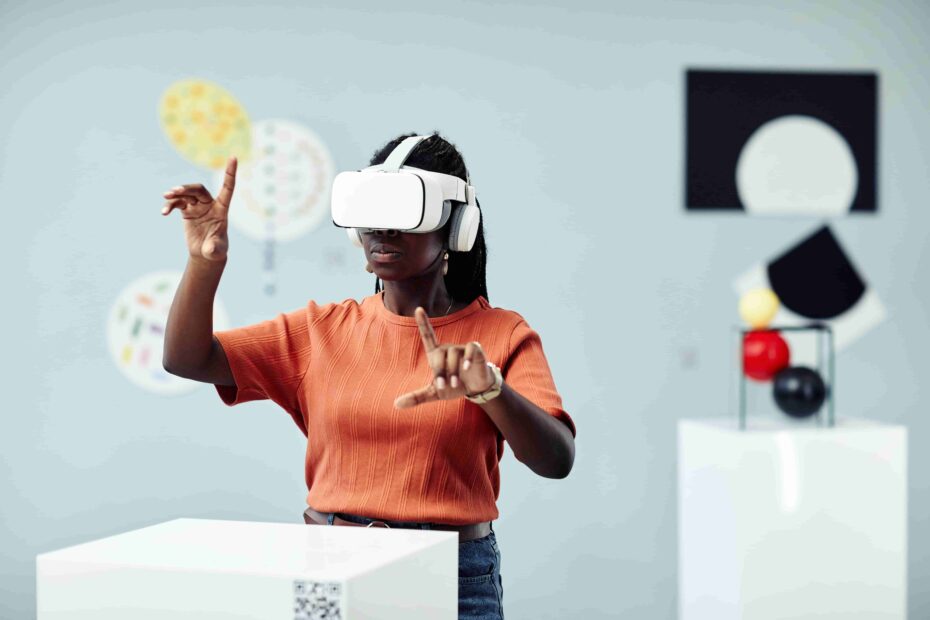A new dimension of experiences: how AR and VR are transforming the way we live
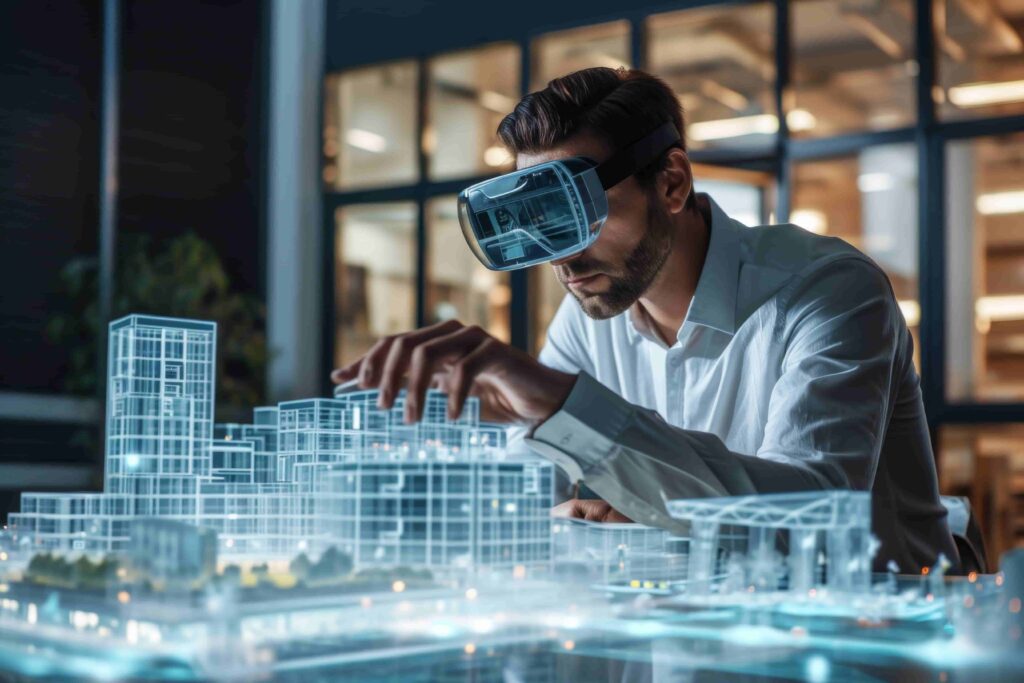
Technological advances have been shaping the way we interact with the world around us. Among the most impactful innovations, Augmented Reality (AR) and Virtual Reality (VR) stand out for offering experiences that blend the physical and digital in revolutionary ways.
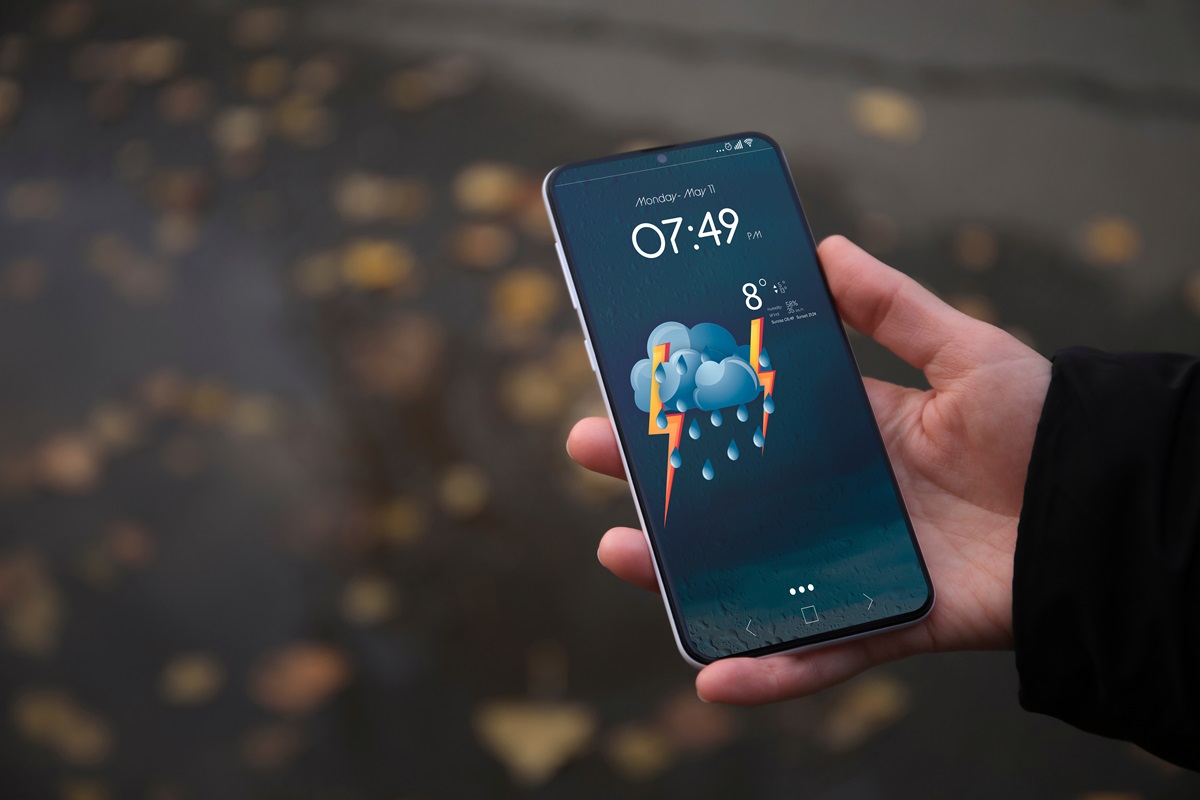
Top 7 Weather Forecast Apps
Explore the world of weather apps: from global forecast models to customizable alerts.
These technologies have transformed everything from learning in schools to interactions in commerce and entertainment. More than just trends, AR and VR are tools that define a new standard of connection with the world, making previously impossible experiences more accessible and realistic.
In this article, we explore how these technologies are changing different industries, their benefits and challenges, and the promising future they promise to create.
Augmented Reality (AR) and Virtual Reality (VR)
Augmented Reality (AR) and Virtual Reality (VR) often appear together in discussions about innovation, but they have distinct characteristics that impact our interactions with the world in different ways.
What is AR and VR?
- Augmented Reality (AR): AR adds digital layers to the physical environment. Through devices such as smartphones, tablets and smart glasses, virtual elements are integrated into the real world, enriching the way we perceive our surroundings.
- Virtual Reality (VR): VR transports the user to a fully immersive digital environment. Using devices such as VR headsets, motion sensors and controllers, users are immersed in a virtual scenario that simulates physical and visual sensations.
How Do These Technologies Work?
These technologies rely on advanced sensors, cameras and software:
- AIR: Processes visual information in real time, overlaying graphics or data onto the captured environment.
- VR: Creates a three-dimensional (3D) virtual environment that responds to the user's movements, providing a fully immersive experience.
Main Differences:
While AR enriches the real world with digital elements, VR replaces the physical environment with an artificially created scenario.
Practical Example: Imagine an AR app that lets you see information about stores by pointing your phone at the street, and a VR simulator where you “travel” to Mars without leaving your home.
These technologies are complementary and together they are transforming how we connect with the world around us.
Impact of AR and VR on Various Sectors
AR and VR are disrupting different industries, changing the way we learn, work and play. These innovations not only offer practical solutions but also increase engagement and create new market opportunities.
Education: Immersive and Dynamic Learning
Education is one of the sectors that benefits most from AR and VR, as both technologies make learning more interactive and engaging.
- Virtual Reality: It allows students to “travel” to historical sites, explore the ocean floor, or learn about outer space in an immersive way. Students can experience situations as if they were physically present.
- Augmented Reality: Enriching teaching materials with interactive elements, such as 3D graphics and animations, transforms learning into a visual and practical experience.
Practical Example: With Google Expeditions, students can explore historic sites in VR, while AR textbooks offer animations that explain complex concepts in real time.
Impact on Education:
These technologies not only improve content absorption, but also motivate students, making learning more accessible for different profiles and ages.
Health: Technological Advances in Medical Care
In healthcare, AR and VR are revolutionizing medical diagnosis, treatment and training.
- VR in Simulations: Training doctors and nurses in complex procedures, without any real risk to patients. In addition, VR therapies help in the treatment of phobias, anxiety and pain control.
- AR in Diagnosis and Surgery: It helps doctors visualize internal structures of the body in real time, increasing accuracy in surgeries.
Practical Example: AccuVein uses AR to project the exact location of veins, reducing errors in procedures like blood draws.
Impact on Health:
VR creates safe environments to train skills and experiment with new treatments, while AR increases accuracy and efficiency in medical interventions.
Entertainment: Unprecedented and Immersive Experiences
The entertainment sector is one of the most explored by AR and VR. From games to movies, these technologies offer a new dimension of interactivity and engagement.
- AR in Games: Examples like Pokémon GO bring the gaming universe into the real world, transforming streets and parks into adventure settings.
- VR in Films and Events: Imagine watching a movie where you are part of the scenery, or experiencing a concert in 360° from anywhere in the world.
Real Example: VR games like Beat Saber create physical, immersive experiences, while Netflix is experimenting with interactive 360° videos.
Commerce and Retail: Transforming the Shopping Experience
AR and VR are changing the way we shop, allowing consumers to virtually try out products before purchasing them.
- AR in Purchasing: Apps allow you to view furniture in your home or try on clothes virtually.
- VR in Retail: Stores create immersive experiences that simulate interactions at the point of sale, without leaving home.
Practical Example: IKEA Place uses AR to let customers see how furniture would look in their homes, before they even buy it.
Impact on Retail:
These technologies increase consumer confidence and reduce the number of returns, in addition to improving engagement with brands.
Real Estate: Virtual Tours and Realistic Simulations
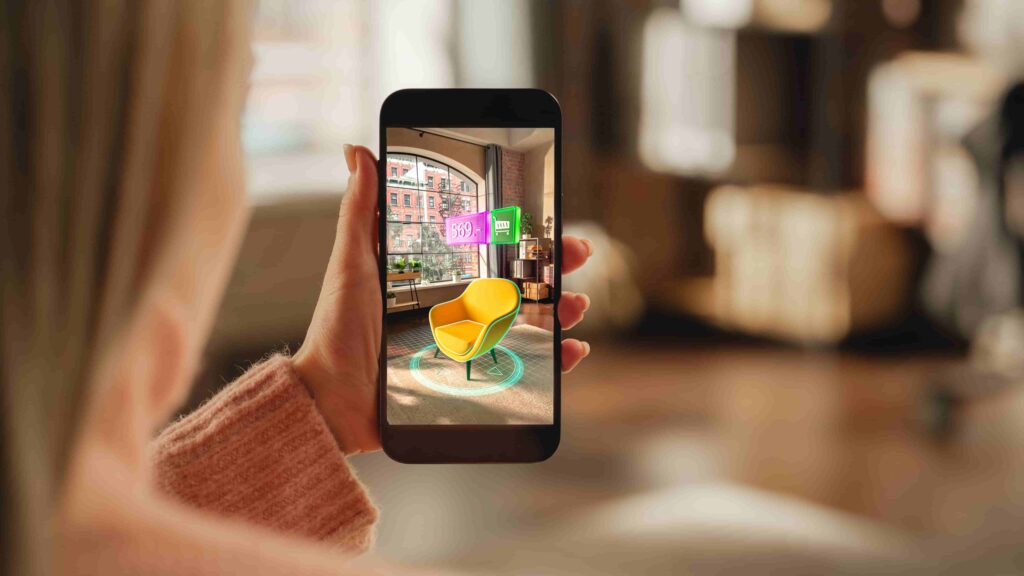
In real estate, VR allows buyers to tour properties remotely, while AR improves the visualization of projects and renovations.
- Virtual Tours with VR: Explore houses and apartments without having to physically be there.
- AR in Architecture: It allows you to simulate how environments can be changed, showing renovations or decorations in real time.
Real Example: Matterport creates detailed 3D models of properties, providing an immersive experience for buyers and agents.
Impact on Real Estate:
These technologies save time, increase decision-making efficiency and improve project presentation.
Augmented Reality and Everyday Life
Augmented Reality (AR) is already part of our daily lives, often so naturally that we don’t even notice its presence. This technology has been incorporated into many aspects of our daily lives, offering practicality, entertainment and creative solutions that make routine tasks easier and improve leisure experiences.
AR on Social Media
Social media filters are a classic example of AR. Apps like Instagram and Snapchat have transformed selfies and videos with filters that change faces, add digital accessories, or even recreate entire scenes around users.
- Interactivity and Popularity: Millions of users use filters daily, whether for fun or to create unique and engaging content.
- Engagement: Brands and influencers use AR for promotional campaigns, such as sponsored filters that increase engagement with products and services.
AR in Navigation and Mobility
Apps like Google Maps are revolutionizing navigation by integrating AR into their features. Using smartphone cameras, it is possible to see arrows and directions projected onto the real environment, making it more intuitive to find destinations, especially on foot.
- Advantage for Tourists: This feature is especially useful in unfamiliar cities, helping visitors get around without relying on traditional maps.
- Accessibility: The visual interface is intuitive for people who have difficulty interpreting 2D maps.
AR in Tourism and Culture
AR is also enriching tourism and cultural experiences by bringing information and interactivity to museums, monuments and tourist attractions.
- Virtual Guides: Many museums offer apps that use AR to provide details about exhibits, reconstruct historical scenes or simulate events.
- Interactive Exploration: Historic sites can be brought to life with animations and AR recreations, allowing visitors to understand the cultural and historical context in an immersive way.
Practical Example: The British Museum in London uses AR to project information onto historical artifacts, providing a richer and more educational experience for its visitors.
AR in Shopping and Interior Design
Many e-commerce apps are adopting AR to improve the consumer experience. In addition to viewing products, users can now try on items like makeup, clothing, and furniture directly in the user’s environment.
- More Conscious Purchase: The ability to virtually test products increases consumer confidence and reduces returns.
- Personalization: AR allows you to adjust colors, sizes, and styles in real time, creating a unique shopping experience.
Inspiring Example: The Sephora Virtual Artist app allows users to virtually try on makeup on their faces before purchasing, increasing convenience and engagement with the brand.
Virtual Reality and Immersive Experiences
Virtual Reality (VR) continues to transform the way we interact with the digital world, offering experiences that transport the user to completely new realities.
From entertainment to professional training, VR has the potential to create immersive and memorable scenarios that transcend the boundaries of the physical world.
VR in Entertainment
Entertainment is one of the areas most impacted by VR, providing immersive experiences that challenge the imagination.
- Virtual Games: VR games put players right in the middle of the action, allowing them to physically interact with the digital environment. Tools like motion controllers and sensors make the experience more realistic.
- Live Events: With VR, you can watch concerts, sports matches and plays in 360°, from anywhere in the world.
Practical Example: Games like Beat Saber and Half-Life: Alyx are redefining what it means to play, creating environments where the player is an active part of the virtual universe.
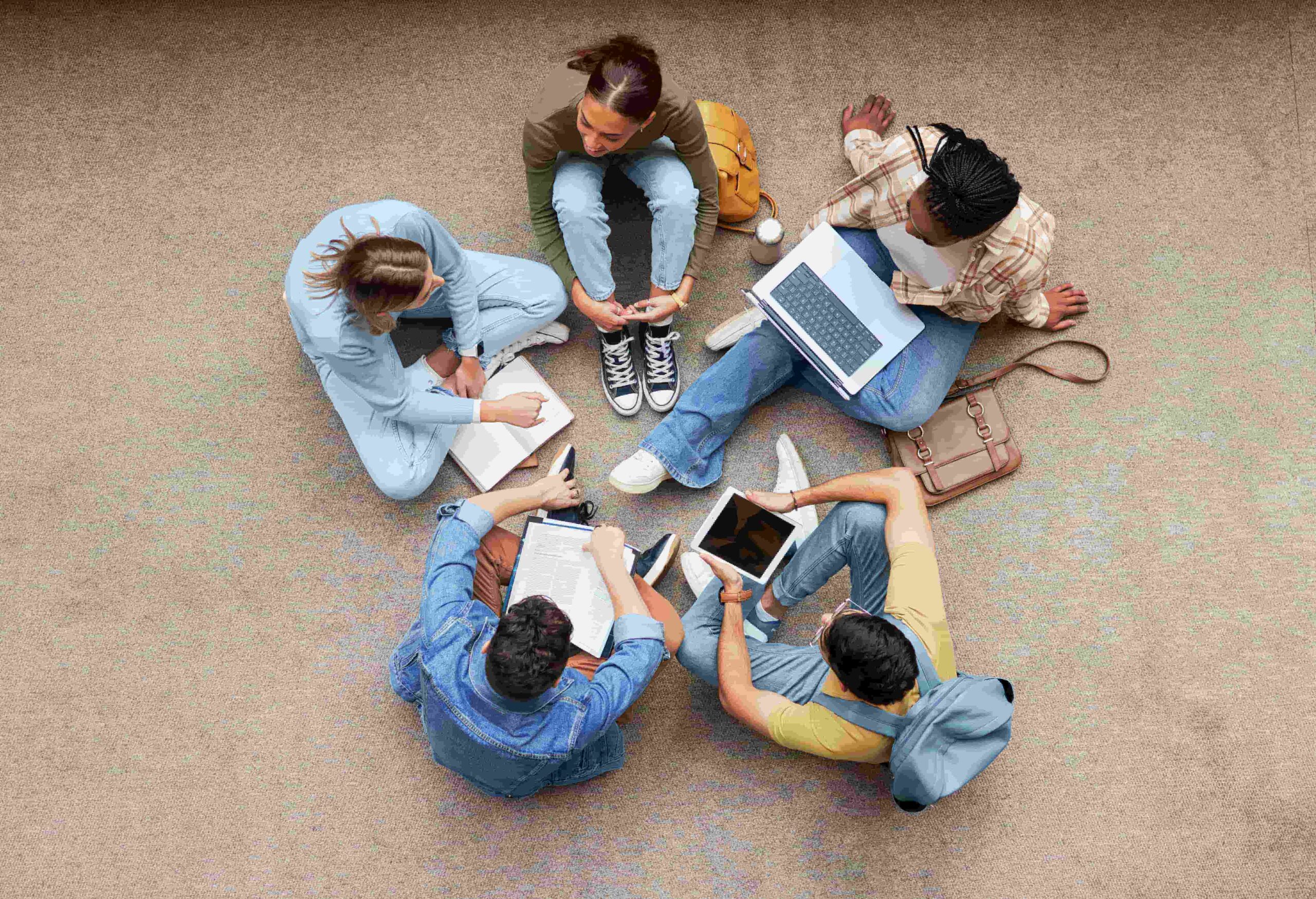
Education Apps: Learn New Skills
Explore the best education apps and discover tools to learn new skills, languages and knowledge in a practical way.
Virtual Travel and Tourism
VR is also transforming the way we explore the world. With 360° virtual tours, people can “visit” distant places without leaving their homes.
- Virtual Tourism: Experience landmarks like the Colosseum in Rome or Niagara Falls in fully immersive experiences.
- Accessibility for All: People with reduced mobility or financial constraints can explore destinations in an accessible way.
Inspiring Example: The Wander app uses VR technology to transport users to global tourist destinations, providing a unique cultural immersion experience.
VR in Professional Training and Simulations
VR has proven to be an indispensable tool in training professionals, allowing practice in simulated environments that replicate real situations.
- Aviation and Engineering: Pilots learn to operate planes in VR simulators before flying in the real world.
- Health: Medical students can perform simulated surgeries without risk, honing their skills in a controlled environment.
Impact on Work: Simulations help professionals gain practical experience in scenarios that would be risky or expensive to replicate in reality.
Technologies Behind AR and VR
Augmented Reality (AR) and Virtual Reality (VR) rely on an advanced combination of hardware, software and data processing to deliver interactive and immersive experiences.
Progress in these components has been critical to expanding accessibility and improving the quality of applications.
Hardware Devices and Equipment
The foundation of any AR and VR experience lies in the devices that support them.
- VR Glasses and Headsets: Devices like the Oculus Quest, HTC Vive, and PlayStation VR are leaders in the VR market. These devices offer motion sensors, spatial audio, and high-resolution displays that create the feeling of total immersion.
- AR Glasses: Tools like Microsoft HoloLens and Magic Leap integrate digital elements into the physical world, allowing users to interact with visual data without losing connection to the real environment.
- Mobile Devices: Smartphones and tablets equipped with high-quality cameras and depth sensors are widely used for accessible AR experiences.
Software and Graphics Engines
The software is responsible for creating virtual environments and processing graphic elements in real time.
- Graphics Engines: Unity and Unreal Engine are the leading platforms for developing AR and VR experiences. They allow the creation of detailed and interactive three-dimensional environments, used in games, training and even architecture.
- Development Platforms: Tools like ARKit (Apple) and ARCore (Google) help developers create applications that use the device's camera and sensors to process real-world information.
Advanced Sensors and Cameras
Sensors play a crucial role in capturing movements and enabling users to interact with the digital environment.
- Motion Sensors: They detect the user's movement and orientation, ensuring that the virtual experience responds accurately.
- Depth Cameras: Equipped with technologies like LiDAR, these cameras create detailed maps of the environment, essential for high-precision AR.
- Motion Controllers: Hand-held devices that track hand position and allow more natural interactions in the virtual environment.
Inspiring Example: The Meta Quest Pro integrates external cameras that capture both the environment and hand movements, offering an immersive experience that combines AR and VR.
Cloud Connectivity and Processing
Advanced connectivity, such as 5G, and cloud computing have the potential to transform AR and VR, making them more accessible and interactive.
- Faster Connections: 5G reduces latency, enabling real-time transmissions, which are essential for high-quality interactive experiences.
- Cloud Processing: It reduces the need for expensive devices, as heavy processing can be done remotely and streamed to the user.
The Future of AR and VR Technologies
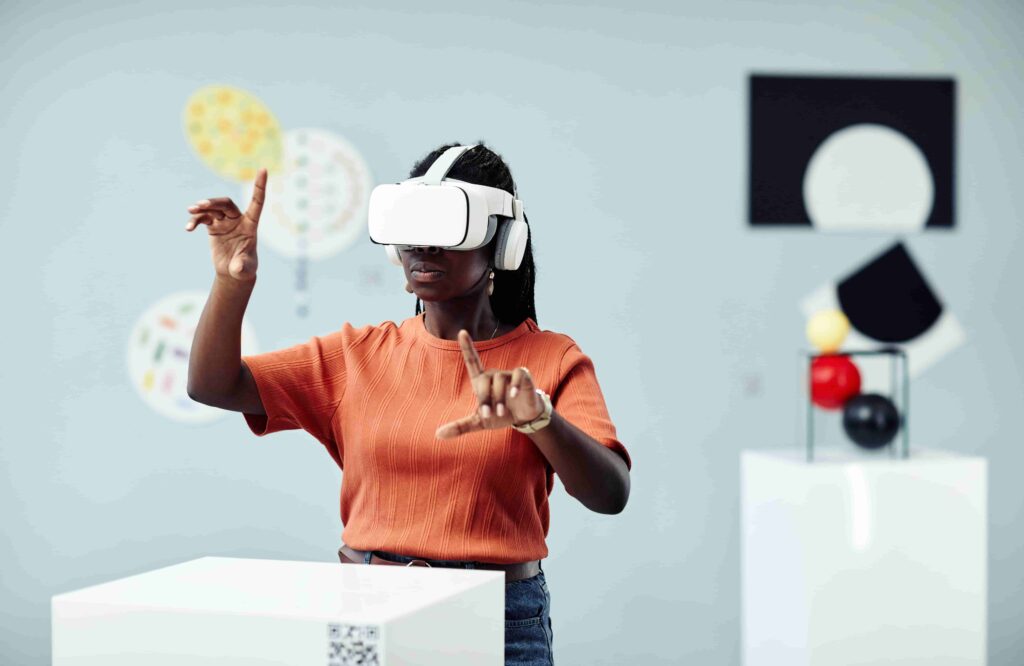
Innovations continue: lighter, more accessible devices with greater processing power are under development.
Advances in artificial intelligence (AI) technologies also promise to improve personalization and interactivity, creating increasingly natural and immersive experiences.
Future Impact: With the integration of AR and VR into the metaverse, these technologies are approaching a point where they will become part of the daily lives of billions of people, whether for entertainment, work or learning.
Benefits of AR and VR
The impact of AR and VR goes beyond the technological factor, offering practical benefits that revolutionize the way people interact with the world and each other.
Access to Impossible Experiences
- AR and VR allow you to explore scenarios and perform activities that would be inaccessible in the physical world.
- Examples include visiting distant planets, performing complex surgeries without risk, and recreating historical events for interactive learning.
Increased Engagement
- In marketing, AR has stood out by creating advertising campaigns that capture the public's attention and encourage direct interactions with products.
- VR, in turn, creates deep emotional experiences, being used to raise awareness of social causes or to simulate environmental impact.
Efficiency in Professional Training
- VR simulations allow professionals to practice critical skills in safe, controlled environments.
- In AR, useful information can be projected into the worker’s field of vision, improving accuracy and real-time decision-making.
Inclusion and Accessibility
- VR makes virtual travel possible for people with reduced mobility.
- AR helps individuals with cognitive difficulties by providing visual and interactive support for everyday tasks.
Real Example: A virtual tourism company allows people with disabilities to explore the Swiss Alps or Caribbean beaches through VR experiences, promoting inclusion and access to new cultures.
The benefits of AR and VR are just the beginning. As the technologies evolve, their applications and impact on society promise to expand significantly, creating a more connected and interactive future.
Challenges and Limitations
Despite their transformative potential, Augmented Reality (AR) and Virtual Reality (VR) technologies face significant challenges that could limit their widespread adoption.
1. High Costs
One of the main barriers to the popularization of AR and VR is the high cost of devices and content development.
- VR Devices: Headsets like the Oculus Quest 2 or HTC Vive are expensive, making them unaffordable for many individuals and businesses.
- Content Production: Developing immersive experiences requires investments in specialized software, design and programming teams, as well as advanced graphic tools.
Impact on Users:
High costs restrict access, particularly in developing countries or communities with low connectivity.
Possible Solutions:
- Popularization of more affordable devices, such as smartphones with advanced AR support.
- Open source platforms for content development, reducing upfront costs for creators.
Technological Barriers
Although technology has advanced, there are still technical limitations that impact the quality of the experience.
- Latency in VR: Even with modern connections, delays in system response can cause discomfort, especially in fast-paced games or simulations.
- Graphic Quality: Mobile devices, widely used for AR, do not always have the capability to render complex graphics.
Operational Challenges:
VR devices often require physical space for movement and may be impractical in small environments or environments with restricted mobility.
Solutions in Development:
- Improvements in connectivity, with 5G networks and cloud processing.
- Lighter and more compact devices that offer quality without requiring as much physical space or robust hardware.

Financial Control Apps
Discover how financial control apps help you organize expenses, create goals and plan your budget in a practical and efficient way.
User Adaptation Problems
Not all users are comfortable using AR and VR. Some experience initial difficulties or even adverse physical reactions.
- Motion Sickness: Motion sickness is common in VR, caused by the discrepancy between real and virtual movements.
- Learning Curve: Many users may find the interface and controls confusing, especially in more complex experiences.
Psychological Impact:
Prolonged use can cause eye fatigue and mental discomfort, as well as creating a disconnect with the physical environment.
Possible Solutions:
- More intuitive and simplified interfaces for new users.
- Reduced weight of devices and improved motion tracking to increase comfort.
Inequality in Access
While AR and VR are promising, not everyone has the necessary conditions to use them.
- Internet Connection: Regions without access to high-speed internet face difficulties in using these technologies, especially those that depend on the cloud.
- Inadequate Infrastructure: Schools, companies and communities with low digitalization are at a disadvantage in using these innovations.
Impact on Inclusion:
The digital divide widens the gap between those who can and cannot access these experiences, restricting their benefits to a select few.
Possible Solutions:
- Public-private partnerships to expand connectivity in rural and remote areas.
- Social programs that democratize access to AR and VR-based educational devices and software.
Despite these challenges, the pace of innovation in AR and VR is accelerating, and solutions to many of these barriers are already in development.
Combining technological advances with efforts to make these technologies more accessible can create a future where their advantages are widely enjoyed.
Future of Augmented and Virtual Reality
The future of Augmented Reality (AR) and Virtual Reality (VR) promises a universe of possibilities in which the physical and the digital coexist in an even more integrated way.
As these technologies evolve, they are shaping a new world, impacting virtually every aspect of society.
1. Integration with the Metaverse
The concept of the metaverse — a virtual universe where people can interact, work, socialize, and play — is driven by AR and VR.
- Immersive Environments: Companies like Meta (formerly Facebook) and Microsoft are investing heavily in creating virtual worlds accessible to billions of people.
- Remote Work in the Metaverse: Virtual offices and immersive meetings can replace video calls, making interactions more natural and productive.
Future Example:
Imagine participating in a meeting with your colleagues in a virtual office, even if everyone is in a different country.
2. Mixed Reality (MR): The Best of Both Worlds
The combination of AR and VR — called Mixed Reality (MR) — is emerging as a new technological frontier.
- Hybrid Experiences: MR allows you to switch between the physical and virtual world, like wearing glasses that project information while you interact with real objects.
- Future Applications: MR will be used in surgeries, engineering projects and even product design.
3. Democratization of Access
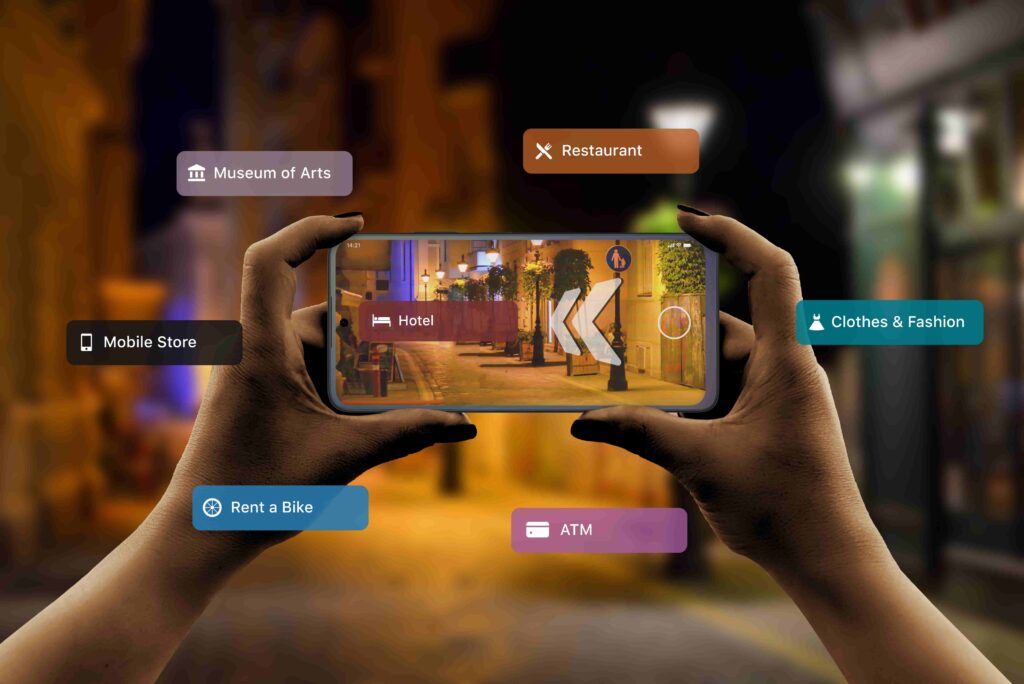
With more accessible devices and advanced global connections, AR and VR will become increasingly present in people's daily lives.
- Lightweight and Cheap Glasses: Companies are developing smaller, lower-cost, more efficient equipment.
- Cloud Processing: Reduces the need for advanced hardware on the device, making premium experiences cheaper.
4. Advances in Artificial Intelligence (AI)
The integration of AR and VR with AI will bring personalized and more intuitive experiences.
- Intelligent Virtual Avatars: Virtual guides or assistants will be able to interact naturally in AR or VR environments.
- Process Automation: AI-based tools will help create scenarios and simulations without the need for large teams.
The future of AR and VR is not only exciting, but inevitable. As these technologies become more accessible and integrated, they will redefine our interactions, creating possibilities we can barely imagine today.
Transformation in Every Aspect of Life
Augmented and Virtual Reality are already changing the way we learn, work, play and interact with the world. While they face challenges, their potential is limitless.
These technologies represent an unprecedented advancement, creating a future where the digital and physical coexist seamlessly and impactfully.
Continue reading: Technology and Education: How Schools Are Adapting to the Digital Age. Discover how the digital revolution is transforming learning!

Technology and Education
From gamification to blended learning, technology is redefining education. See how schools are adapting to the challenges and opportunities!
